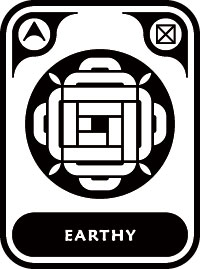 As the low vibration of the Om rippled across the room I watched the small group of figures begin to move in the dim light. Some swayed gently from side to side, a few fiddled with the bandanna securely fastened across their eyes, patting and pulling at it until it felt right, a couple shuffled their feet hesitantly. This was the delicate part, the first few minutes in the darkness when the mind struggled against the loss of sight, reacting to the vulnerability that arises when we lose our primary sense of orientation or control.
As the low vibration of the Om rippled across the room I watched the small group of figures begin to move in the dim light. Some swayed gently from side to side, a few fiddled with the bandanna securely fastened across their eyes, patting and pulling at it until it felt right, a couple shuffled their feet hesitantly. This was the delicate part, the first few minutes in the darkness when the mind struggled against the loss of sight, reacting to the vulnerability that arises when we lose our primary sense of orientation or control.
I turned my attention back to the stark brightness of the laptop screen and moved the cursor down the iTunes list until I found the track I was looking for. As the raw sound of African drumming bounced out of the speakers I felt the group respond. Feet began to move, hips began to swing and they were off, each on a sacred journey into the mysterious unknown.
One of the most common questions I am asked when facilitating a Trance Dance event is “why the bandana?”…”can’t I just close my eyes?”…”I promise I won’t peek”… and the answer I always give is, “no, it’s just not the same…”
Dancing blindfolded is the core structure of Trance Dance and it is designed not just to take you out of your comfort zone, but out of ordinary reality. When we don the bandana we remove ourselves from our daily thoughts and concerns, we take a mental break from the outside world and we focus within. There are practical reasons to use the bandana; it guarantees privacy for the group, it reduces the temptation to open your eyes and look around if you get tired, bored or you bump into another dancer. When using a bandana, you don’t have to try to keep your eyes closed, the bandana does it for you. Covering your eyes with a bandana makes it easier to relax and let the music move you, to allow your body the freedom to express – but that is not all it does.
Something mysterious happens when we shut down our primary sense of sight – we open the doorway to our own inner world. Connected by the optic nerve, our eyes are literally hardwired into our brains. All day long our brain is processing a multitude of images, complex patterns of light, shading and perspective, negotiating the physical world and interpreting the meaning or significance of outside events. We don’t get much rest. If your eyes are open, you can hardly choose not to see. The only time we get a break from all this visual input is when we lie down to sleep and then our subconscious takes over, weaving our impressions into night dreams which we often can’t remember on waking. It is no surprise then that we have scarce opportunity to discover and participate in the deeper workings of our inner life.
When we cover our eyes with a bandana made from a heavy weighted fabric, we disrupt the flow of light and information from the outside world, and our attention turns and looks within. Now there are new images to discover, new patterns to interpret and new perspectives to understand. We are awake and our inner world speaks, sometimes in words, more often in stories, images, sensations. We discover our inner feelings; perhaps deeply buried pain from the past, the forgiveness required to heal, an insight into our own behaviour or meetings with ancestors or spiritual guides. Indigenous people talk of the Dreaming or Dreamtime and it is understood that this is neither a time in history nor a place in the outer world, but rather an ongoing function of the human psyche. To dream is to create. Conscious dreaming is conscious creation. What is going on right now in your inner world? What kind of dream is creating your life? What do you find when you cover your eyes and look within?




